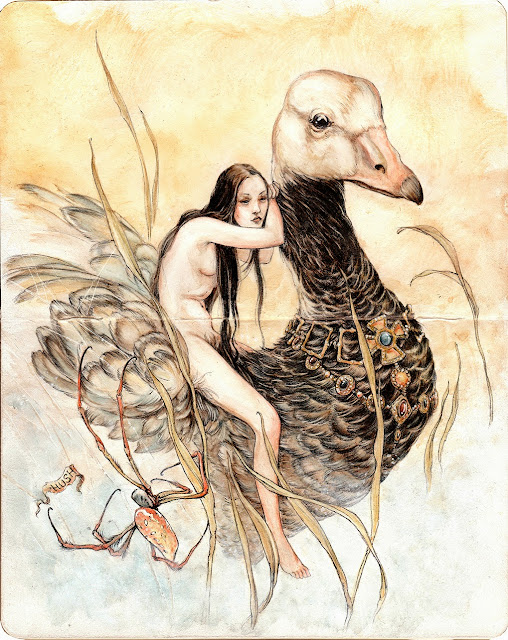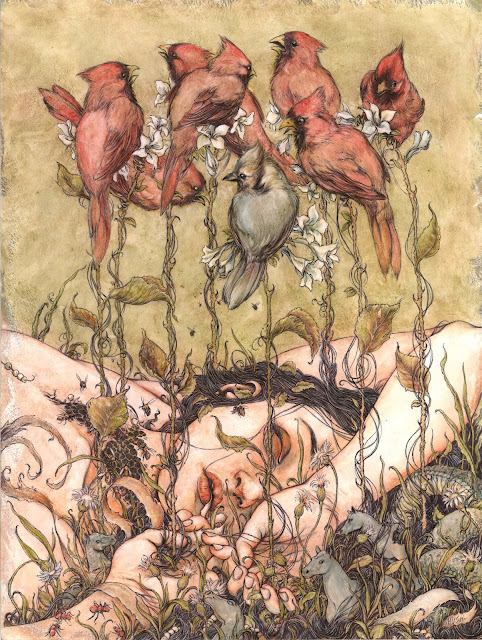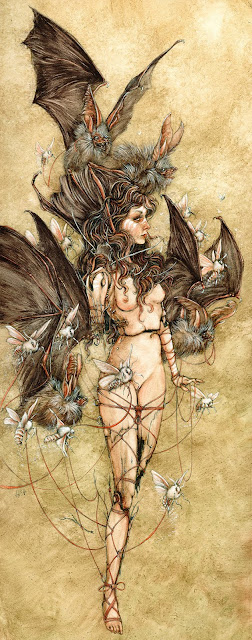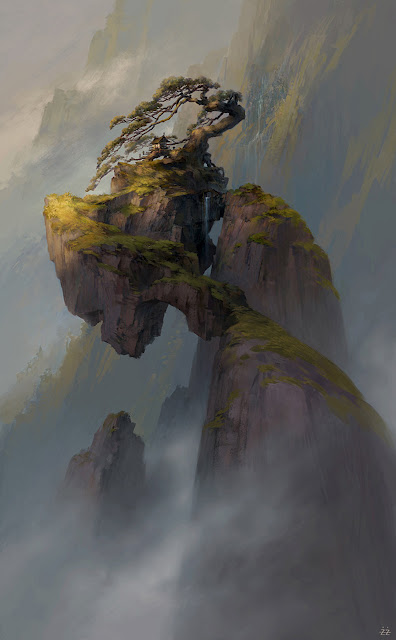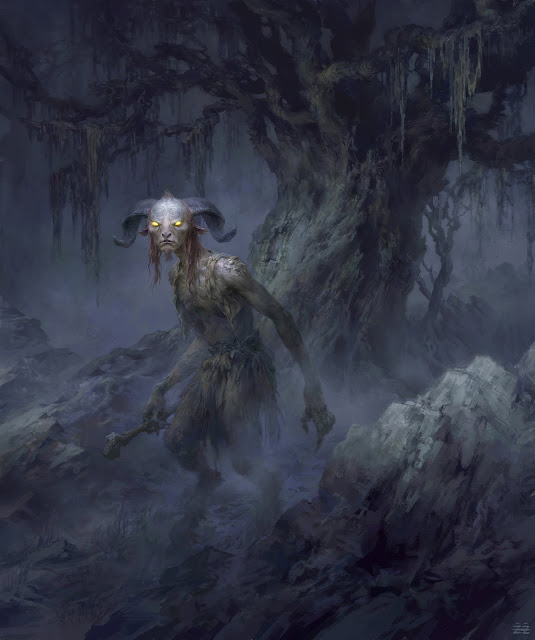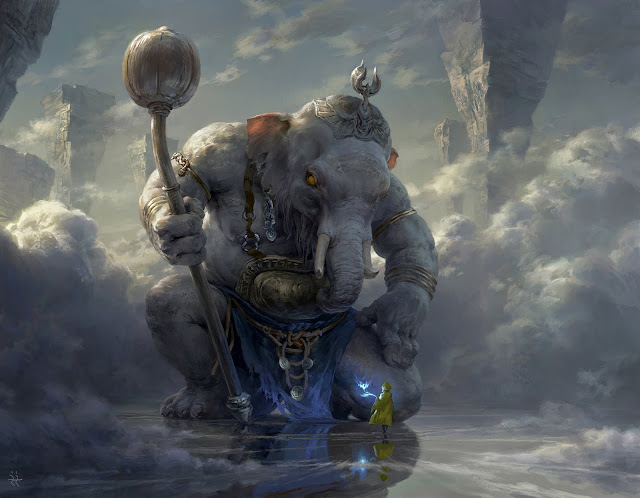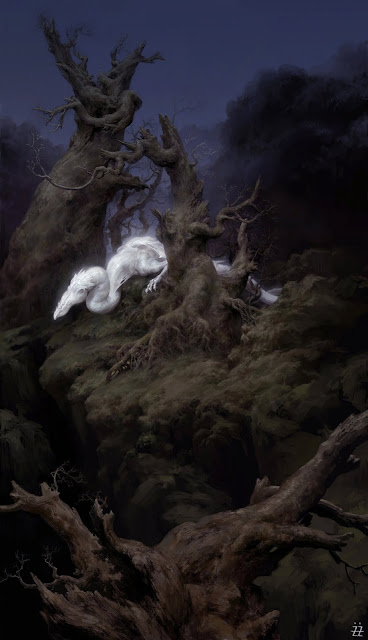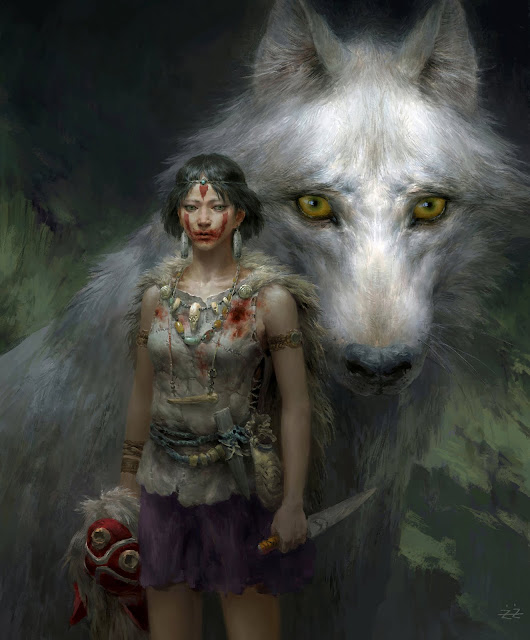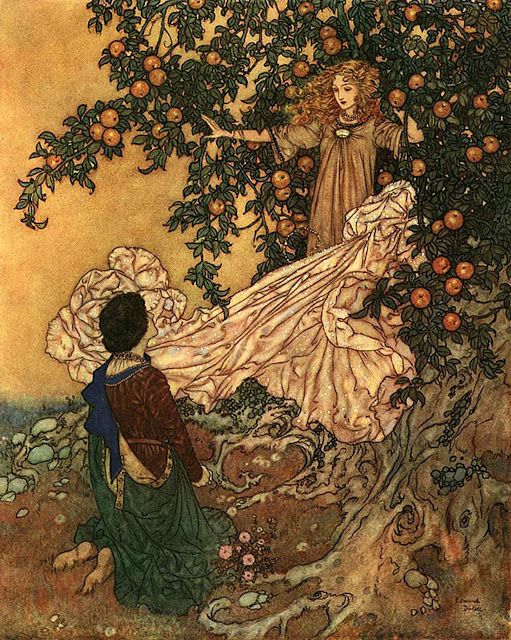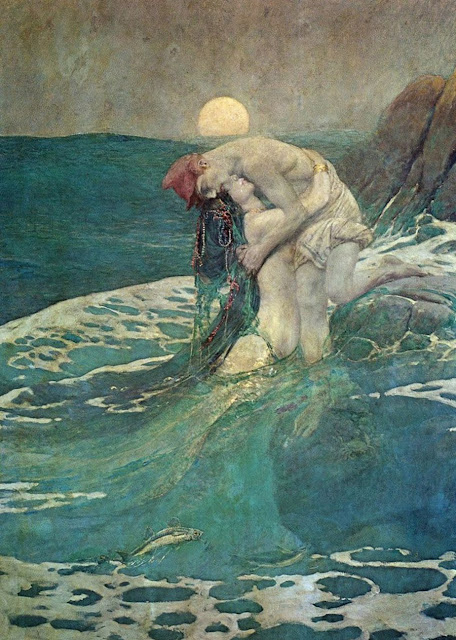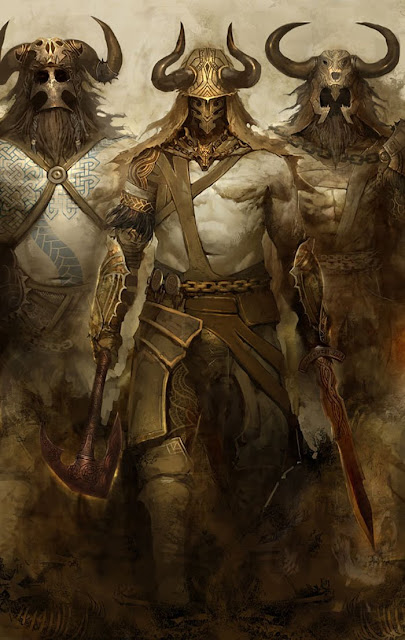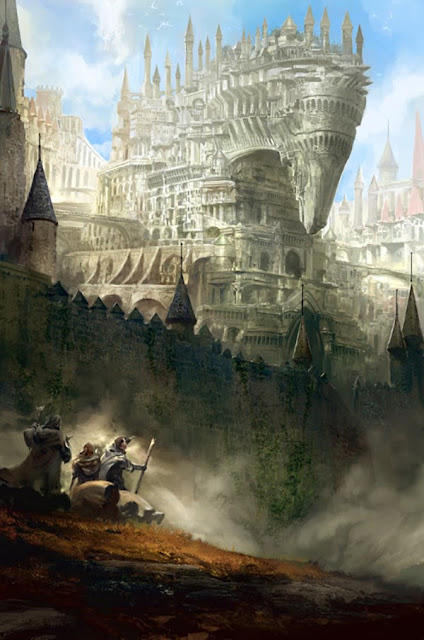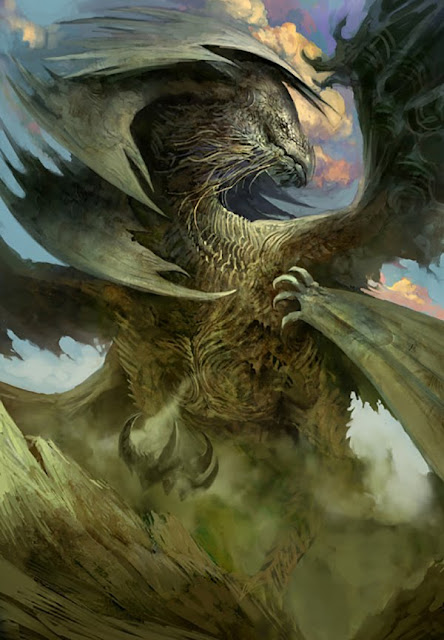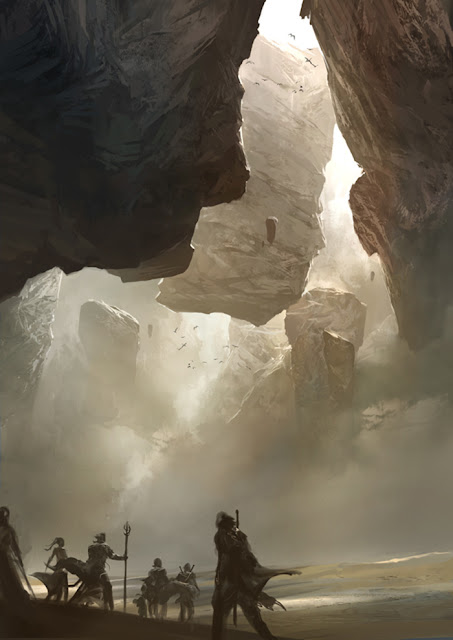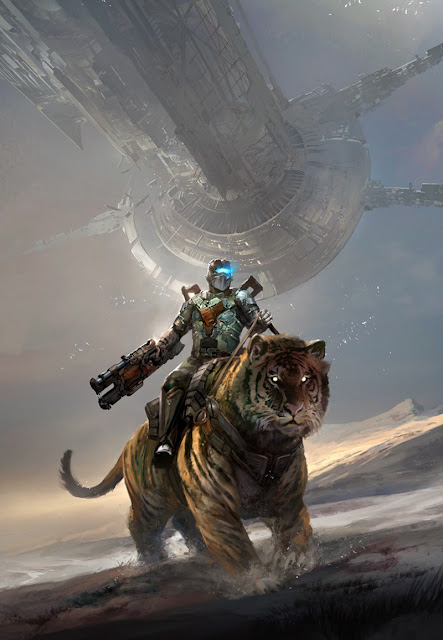Thursday, January 26, 2017
The Illustration of Jeremy Hush
Few artists have managed to so effortlessly bridge the gap between classic and modern illustration as Jeremy Hush. Using ink and watercolor, Hush employs a technique that flourished over a century ago during the Golden Age of Illustration. At first glance, you might even mistake Hush's illustrations as older works commissioned for classic fairytales, yet closer inspection reveals a world of cracks and kinks and an artist well acquainted with the tropes of modern fantasy. While many of his peers have embraced digital media, Hush continues to carve out his space in traditional mediums. Though most of his work is watercolor on paper, he is also an artist that has done work with wood and glass. Not only are Hush's illustrations beautiful, they also manage to convey a mysterious and macabre fantasy world in miniature.
Saturday, January 14, 2017
Concept Art Spotlight: Tianhua Xu
For the past decade an increasing amount of concept art has been produced in China. Greater access to design software coupled with studios expanding their search for talent has produced a wave of superb new artists and illustrators melding cultural visions of what fantasy can look like. One of these artists is Tianhua Xu. The head of Chekyen Studios, Xu has been making a splash on artstation, cgworld, and cghub (RIP) over the past several years with his gorgeously lush and detailed renderings of characters and fantasyscapes. What makes Tianhua's work so interesting is the way he effortlessly blends U.S. and Chinese fantasy tropes to create a world all his own. Here are some of his most inspiring pieces.
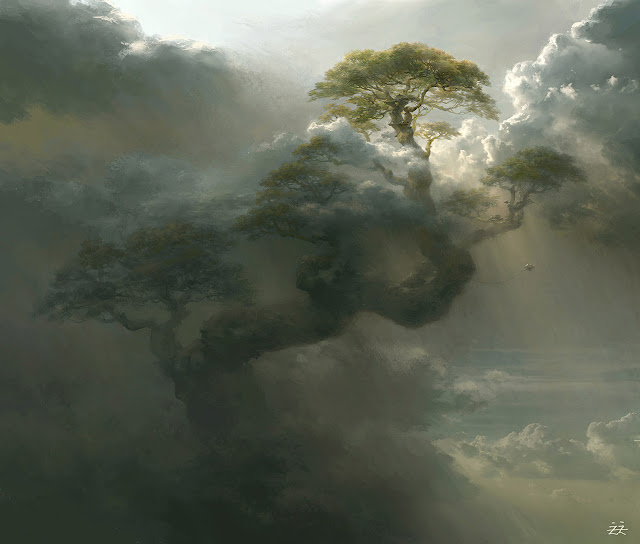

Find more of Tianhua Xu's work at https://tianhuaxu.artstation.com/
Wednesday, January 11, 2017
Looking Backwards: the Illustrations of Edmund Dulac
Edmund Dulac stands as one of the greatest illustrators of all time. Born in France in 1882 and later emigrating to London, Dulac would rise to prominence during the golden age of English illustration. Though the period was filled with iconic artists, no other illustrator would work so prolifically to broaden the visual scope of the fantasy genre. Dulac illustrated everything: Shakespeare, Rubaiyat, Hans Christian Andersen, Edgar Allan Poe, The Arabian Nights, and countless other fantasy-inspired illustrations for stamps and relief books. No other artist would so profoundly illuminate turn-of-the-century European literature.
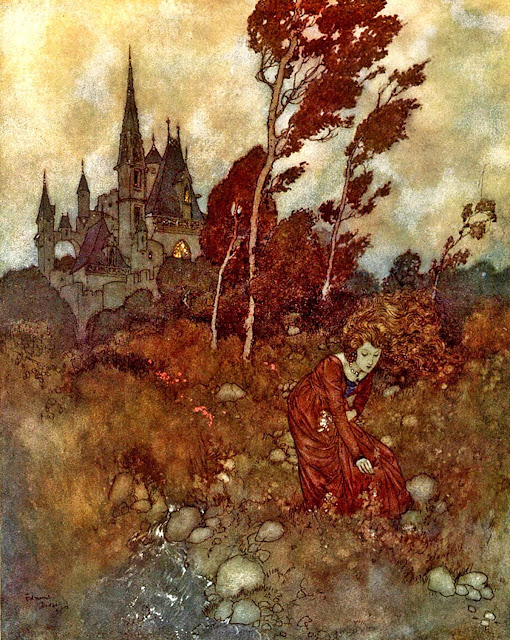
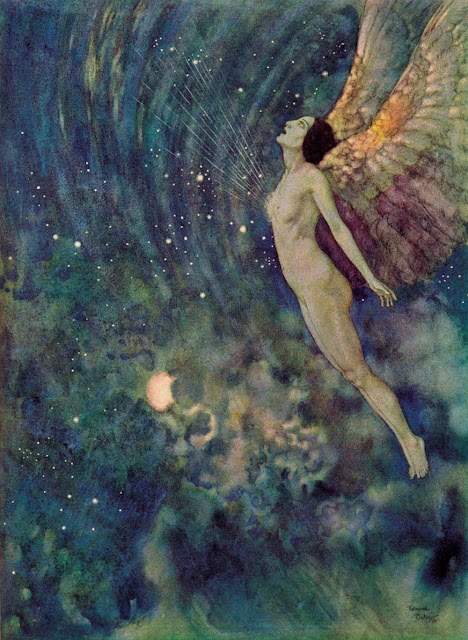

Like other Golden Age illustrator's Dulac's work chiefly appeared in special deluxe edition printings that were immensely popular from 1890 until the beginning of the First World War. These vibrantly illustrated pressings were generally marketed as gifts that made their way into upper middle class libraries in England, France and the United States. Though fantasy had been a rapidly expanding genre throughout the 1800s, these illustrated books allowed readers to see worlds that were sometimes difficult to envision based on text alone. While a solid century's worth of film, television, comics and other visual media have provided us with a wealth of easily identifiable fantasy tropes, it's easy to forget how hard it might be for someone to envision a secondary world full of imaginary places, creatures, and technologies. Artists like Dulac not only helped enliven the texts they illustrated, but they also helped establish what we might consider the visual "palette" of modern fantasy.



Friday, January 6, 2017
Concept Art Spotlight: Kekai Kotaki
Kekai Kotaki is one of the most exciting American concept artists working in the video game industry today. Originally from Hawaii, Kotaki has built a career in Seattle creating concept pieces for ArenaNet, designing some absolutely stellar art for the Guild Wars series. Though most concept art tends to be more functional than artistic, the same can't be said for Kotaki, who has distinguished himself by crafting some of the most detailed and smartly composed concept pieces you'll find online today. Kekai's art exhibits both western and eastern influences, revealing a deep familiarity with the U.S. fantasy tradition, while incorporating a subtle anime flair that keeps his work from feeling overly ham-fisted (I'm personally reminded of the best Final Fantasy Tactics art when examining his character models). Not only are his renders gorgeous, they're intelligently composed and balanced so that his finished pieces feel more like illustrations than raw concept work. Kekai is also one of the few artists who can claim to have successfully mastered both character and environment pieces. Here are some of his most inspiring digital paintings.
See more of Kekai Kotaki's work on Kekai Kotaki Tumblr
and his personal website kekaiart.com
Subscribe to:
Comments (Atom)
